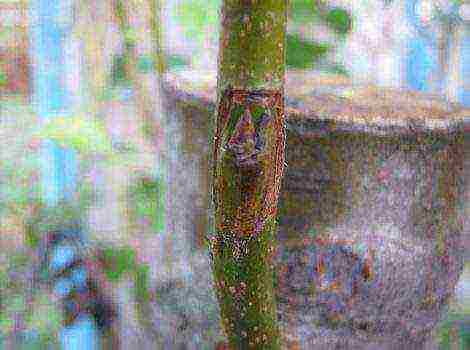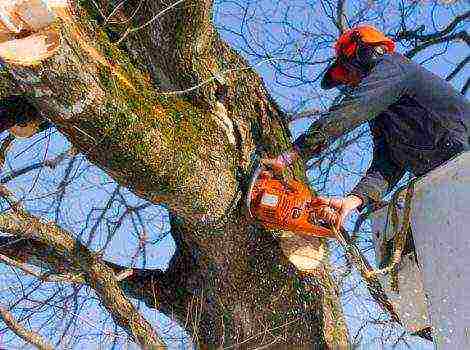Content
Features of planting and caring for irga
Irga is a very unpretentious berry bush. Its berries are prized for their healing properties, they are rich in vitamins. It is using these berries that you can defeat a number of diseases, such as: vitamin deficiency, colds and viral diseases and a number of others... This berry is considered a long-liver, regardless of the place and growing conditions.
Basically, irga is used as an ornamental plant. In spring, it blooms very beautifully and smells fragrant throughout the garden. Its white inflorescences are a bait for bees, which is why in the future it is well pollinated and bears fruit. And to get a healthy plant and a good harvest, you need proper care, starting with planting.
In what time frame is it necessary to plant an irga
When choosing a planting date, gardeners need to take into account climatic, zonal conditions.
The best time for planting seedlings in central Russia is autumn.... Before the onset of the first frost, saplings planted from mid-September to early November, manage to take root and gain strength for wintering.

In the northern regions of Russia, the planting of irgi should be postponed to spring. This is due to early autumn frosts. And in the spring, when the soil begins to thaw a little, you can plant bushes that are in a dormant period. With increased sunlight and the onset of warmer days, the irga begins to dissolve its buds, without the risk of freezing.
An important condition for obtaining the maximum yield from the plant is compliance with the optimal planting dates. If this deadline for autumn planting is missed, but the seedlings are ready for planting, they can be saved until spring using one of the methods suggested below:
- Place in a container filled with sand or sawdust, and store in a cool dark place. Better if it is a basement or cellar;
- Dig in the ground, while tilting the seedlings at an angle of 45 degrees from the soil and cover with snow in winter;
- And the last way wrap in a bag and put in the place of the garden where a large snowdrift forms in winter.
When is the best time to plant - in spring or autumn?
According to the advice of experts, the best time to plant or transplant all fruit and berry plants is autumn. If the terms and rules of autumn planting are met, the best planting material is used, your plant will easily take root.
Benefits of planting trees in autumn:
- Autumn planting is a little hassle, since frequent watering and fertilization are not required. Autumn is the time of abundant moisture;
- It is more expedient and it is more profitable to buy seedlings in the fall, since it is during this period that there is a large selection of planting material. The last leaves are still on the seedlings, there is a well-developed root system, according to which you can choose a healthy plant. Also, some sellers can demonstrate the ripe fruits of this plant;
- Planting a plant in autumn save the gardener's time in spring, thanks to which he will be able to do other garden work;
- Less damage will be done to the plant, since at this time a period of rest begins.
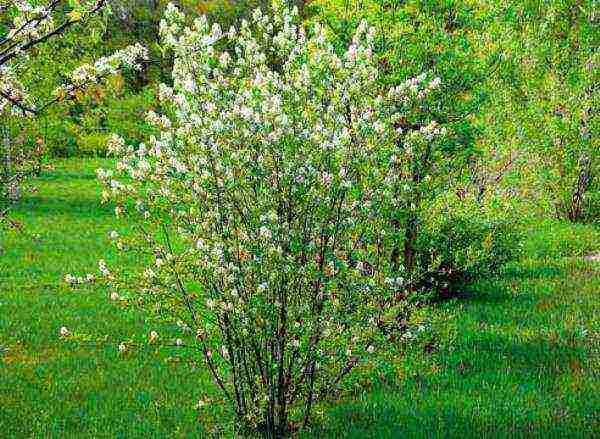
But there are also disadvantages when planting in the fall. These include:
- Very cold winters, with deep freezing of the ground, which can harm the root system of the seedling;
- In winter, often trees exposed to rodent infestations;
- Big trouble planted bushes can cause strong winds, a rough snow crust formed, a small or large amount of snowfall;
Important rules for boarding, seat selection
If you have a garden plot, then when planting irgi, first of all it is necessary to determine the place... The irgi bush grows strongly over time and takes up a fairly large area in the garden, so you need to plant it so that it does not interfere with the rest of the fruit and berry plants in your garden. Also, the irgi has abundant growth, which over time will litter your site and cause inconvenience. Better to plant irga somewhere in the corner of the garden. Approximate distance from other trees from 2 before 5 meters.
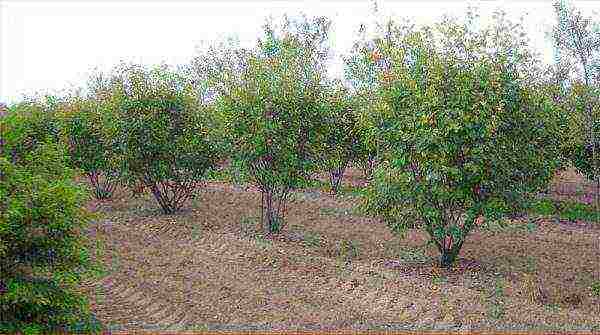
You also need to consider the types of soil your plant will grow on. Although the irga is unpretentious to the types of soil, nevertheless, it does not like the close location of groundwater, since the root system goes 3-4 meters deep and will be in constant contact with moisture. This can lead to root rot. Therefore, it is better to plant on light, fertile soils. Such soils contribute to the minimum formation of root shoots.
When planting irgi, the illumination of the site is important, she loves partial shade very much... With strong shading, the plant will stretch out strongly during growth, the berries will be small and not sweet. They may even crumble without ripening.
How to plant a shrub
Irga perfectly reproduces both by seeds and by root suckers. First you need to properly prepare the seedling for planting. Better to choose a one or two year old scion... You also need to select more healthy bushes, not damaged by insects and not broken off. Species and varieties of irgi are considered important when choosing a seedling. When planting several plants, take into account the distance between them up to two meters.
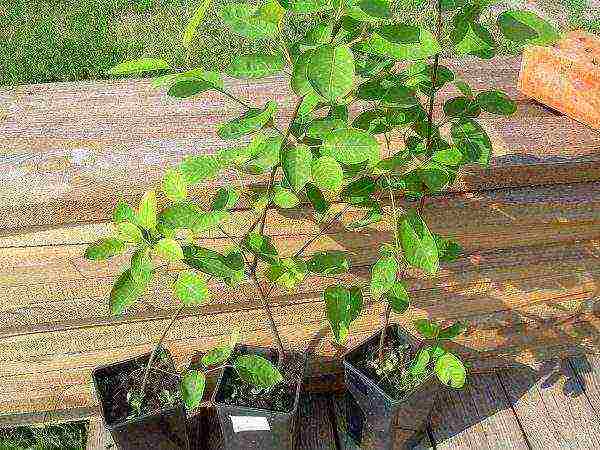
We have already mentioned that the choice of location and soil depends on the light, the presence of fertile soils, and the amount of space around the tree.
Where to start planting and further care
It is necessary to dig a hole about two bayonets of the shovel deep into, and about 40 to 60 cm wide. Carefully pour the earth to the side. Drainage can be placed at the bottom of the fossa (broken brick, small stones, broken slate) so that moisture does not stagnate in the soil. You can add sand, black soil to the hole. Further, it is necessary to pour a little earth in the form of a tubercle at the bottom of the hole, so that it is easier to place our seedling on it. We put an irga on this tubercle and straighten the roots along it. Next, we cover it with earth, but so as not to bury the place where the trunk passes into the root system. The soil around the planted plant should be trampled down and watered abundantly.
Many gardeners advise pruning the shoots after planting. up to 15 cmso that a few buds remain on the branches.
We have already mentioned that irga is an unpretentious shrub. It does not require significant maintenance. The main thing is watering as the earthen coma dries up around the tree and applying fertilizers. Used as fertilizers humus, potash fertilizers, superphosphate and organic mixtures.
Pruning
The irgi bush very often grows thickened, so it is pruned. It is recommended that pruning be carried out in the spring, when the irgi sap flow has not begun... Cut dry or poorly developed tree shoots. A couple of stems are removed annually, leaving young shoots in their place. Also, the tops of the branches are pruned by a few centimeters in order to form a bush of the correct shape, and also so that there is no excessive thickening. They also cut out the lateral root shoots so that it does not damage other fruit trees on the site.
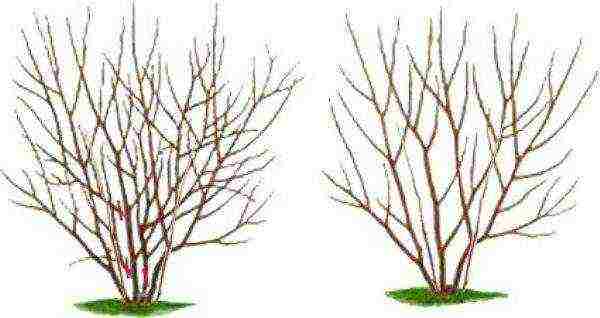
Pruning makes the irgi bush more attractive and also promotes better fruiting.
After cutting off branches and shoots, it is necessary to close the cuts... This is done using garden varnish or paint on natural ingredients. Cut off dry branches and fallen leaves should be removed from under the bush, this is necessary in order to protect the plant from pests that can start in old leaves.
Reproduction and transplantation
Irgu can be propagated in several ways:
- Seeds;
- Root shoots;
- Graft;
- Cuttings;
- Division of the uterine bush.
Seeds
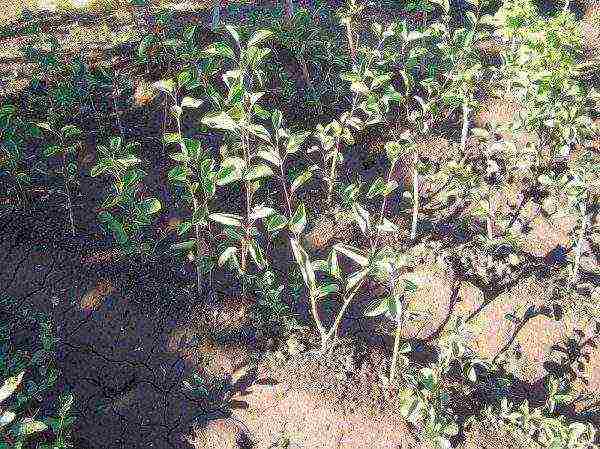
When propagating by seeds, you need to select the most ripe, undamaged berries. Release seeds. Mix them with sand, as they are very small. Seeds are sown in the fall in prepared beds... It is important that the seeds are stratified, that is, they are cold-hardened. You can also sow seeds in a bowl of sand and stratify in a dark basement, periodically dampening the sand. In the spring, such seedlings are planted in the ground.
Root shoots
Since the irga produces a large number of lateral root suckers, this method is most common among amateur gardeners. The lateral stepson is carefully dug out from the side of the mother tree to cut the root connecting the main bush with the offspring... Next, we transfer the seedling to a new planting site and bury it in a previously prepared hole.
Graft
Vaccination is one of the more difficult breeding methods. It is mainly used by experienced gardeners. Vaccination can be carried out in the spring, after the sap flow has begun.... Rowan is the most suitable for the stock.
Cuttings
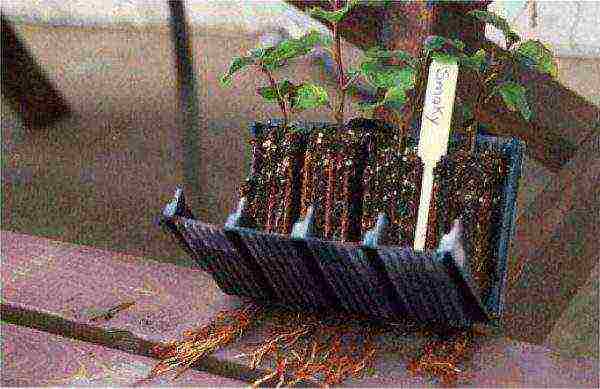
For cuttings, young shoots are cut, about 20 cm. Young cuttings are cut from the leaves, but the top pair is left... It is necessary to hold such planting material for some time in a growth stimulant solution. Next, we bury them in the sand up to 10 cm. Cover with a film. It is important that the sand does not dry out; occasionally we open the film for airing. After the cuttings take root, they must be transplanted to a permanent place.
By dividing the bush
By dividing the main bush, you can get several ready-made, well-rooted plants. Such a transplant is carried out in the spring, before bud break, or in the fall, when the foliage falls.... Basically, this method is used when you need to transplant a bush from one place to another.
Conclusion
Irga can be found in almost every garden. This is due to the fact that this plant is unpretentious in its cultivation, care and reproduction. Subject to all the rules of agricultural technology, all gardeners get the maximum yield of this berry.which brings a lot of benefits to human health.

